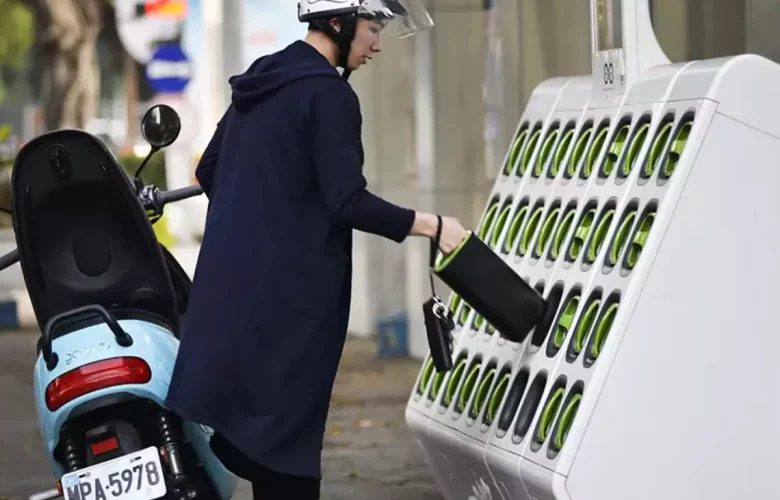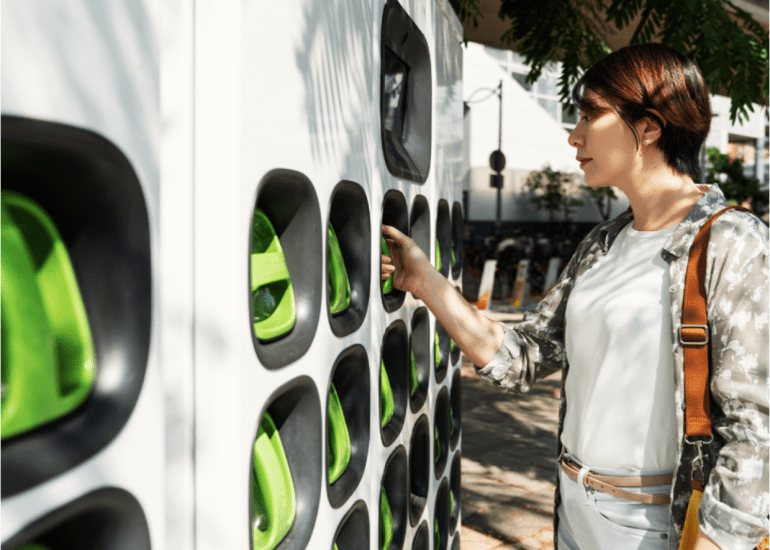As electric mobility accelerates globally, a game-changing concept is emerging: the Battery Swapping Solution. This service is redefining convenience and practicality in EV ownership swapping depleted batteries for charged ones in minutes instead of waiting around for charging. In countries like India, this innovation could prove pivotal for widespread EV adoption. One company bringing this vision to life is Electreefi, advancing the practical infrastructure needed to make battery swapping a mainstream feature.
What Makes Battery Swapping So Transformative?
1. Speed and Operational Uptime
Traditional EV charging, even fast charging, can take anywhere from 30 minutes to several hours. Battery swapping slashes this waiting time to just 3–5 minutes, turning vehicle refueling into something comparable to petrol pumps. This is especially game-changing for two- and three-wheelers used in delivery, ride-sharing, or e-commerce. Electrified fleets can stay on the road longer maximizing efficiency and margins.
2. Lower Upfront Cost for EV Owners
Swappable battery systems often adopt a Battery-as-a-Service (BaaS) model, where the user buys the vehicle without the expensive battery. Instead, they pay for energy use or swaps. Separating vehicle and battery ownership significantly lowers the EV’s upfront cost, making ownership more accessible.
3. Optimized Infrastructure and Energy Use
Creating charging infrastructure across every corner of a country is a massive challenge. Battery swapping streamlines this by centralizing battery charging at smart hubs, reducing land and electrical grid investments. Plus, batteries can be charged during off-peak hours with renewable energy, improving energy efficiency and grid stability.
4. Environmental and Policy Momentum
Swappable batteries can promote better recycling, improved battery lifespan, and structured lifecycle management advancing sustainability. Governments are increasingly recognizing this potential. Recently, India proposed reducing GST on swappable batteries to support gig-economy fleets and deeper EV integration.
Real-World Impact: Why Battery Swapping Works
- India’s Fleet Vehicles: For delivery bikes, e-rickshaws, and other fleet vehicles with tight schedules and frequent use battery swapping keeps downtime minimal and productivity high.
- Global Momentum: Countries like China have seen success through players like NIO; over 2,000 swapping stations enable EV owners to swap batteries in under three minutes.
- Industry Backing: Venture capital and EV startups are heavily investing in swap-based solutions for dense urban markets where charging infrastructure lags.
Challenges to Overcome
While promising, battery swapping is not without hurdles:
- Standardization Issues
Vehicles use diverse battery chemistries and form factors, making universal swapping stations difficult. Interoperability remains a major technical challenge. - Capital-Heavy Infrastructure
Swapping stations require investment not just in real estate but also in battery inventory and logistics systems costs that pose barriers to entry. - Ownership and Maintenance Risks
Ensuring quality control, safety, and tracking of swapped batteries presents liability concerns. Clear protocols are needed to manage shared battery use. - Limited Reach Yet
Currently, swapping stations are mostly urban. Scaling to tier-2 cities and rural areas is a major undertaking.
Electreefi: Building the Future of Swappable Mobility
Electreefi is at the forefront of deploying comprehensive battery swapping networks. Their infrastructure solutions part of a broader Battery Swapping Solution package integrate smart stations, charging logistics, and service platforms to enable seamless swapping. Cleverly blending digital tools with physical infrastructure, Electreefi makes adopting battery swapping both practical and scalable.
The Road Ahead
With investments and policies now aligning, battery swapping stands as a powerful accelerant for EV growth especially in commercial, two-wheeler, and urban use cases. If India continues to support interoperability, reduce taxation mismatches on swappable batteries, and incentivize BaaS models, battery swapping could become mainstream, especially in dense urban corridors.
Conclusion
The Battery Swapping Solution is fast-tracking EV adoption by solving core challenges of cost, convenience, and infrastructure. It offers high uptime for commercial fleets, lower entry costs for drivers, and reduced load on India’s power grid. Though standardization and investment remain challenges, innovators like Electreefi are turning swapping from an intriguing idea into scalable reality. As cities densify and deliveries grow, swapping may yet become the backbone of urban mobility.
FAQs
What is a Battery Swapping Solution?
A Battery Swapping Solution is a system that allows EV users to quickly exchange a discharged battery with a fully charged one at a swapping station. This eliminates long charging wait times and ensures vehicles can get back on the road in just a few minutes.
How does battery swapping benefit fleet operators?
Fleet operators, such as delivery services and ride-hailing companies, benefit from battery swapping because it minimizes downtime. Instead of waiting hours to recharge, drivers can swap batteries in minutes, improving productivity and overall operational efficiency.
Is battery swapping more cost-effective than traditional charging?
Yes, battery swapping often follows a Battery-as-a-Service (BaaS) model, where users don’t purchase the battery outright. This reduces the upfront cost of EV ownership and allows users to pay only for the energy consumed, making it a more affordable option.
What challenges does battery swapping face in India?
The major challenges include the lack of standardization across battery types, the high cost of infrastructure setup, and the need for widespread deployment beyond urban centers. Addressing these issues is critical for scaling battery swapping nationwide.
How is Electreefi contributing to battery swapping adoption?
Electreefi is developing advanced battery swapping networks that integrate smart charging hubs and user-friendly digital platforms. By building efficient infrastructure, Electreefi is helping make battery swapping accessible, reliable, and scalable for both individual users and commercial fleets.



